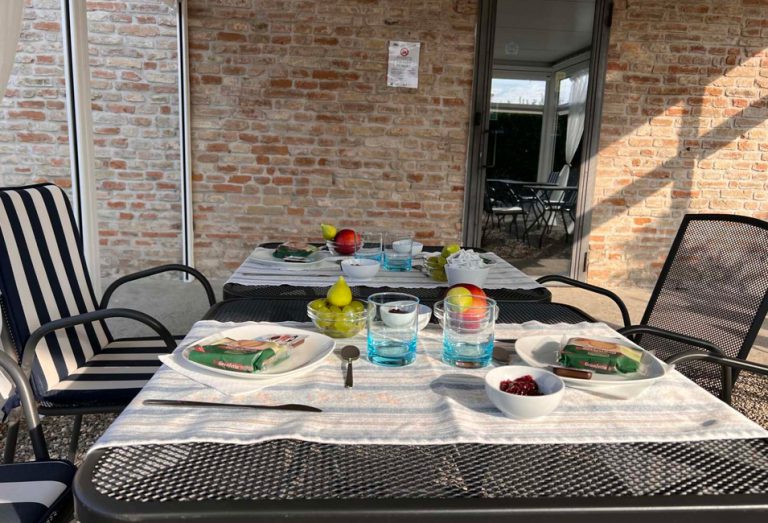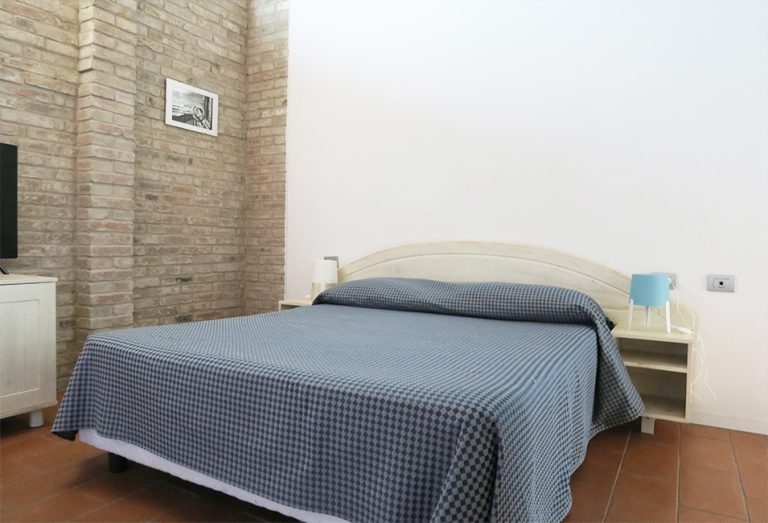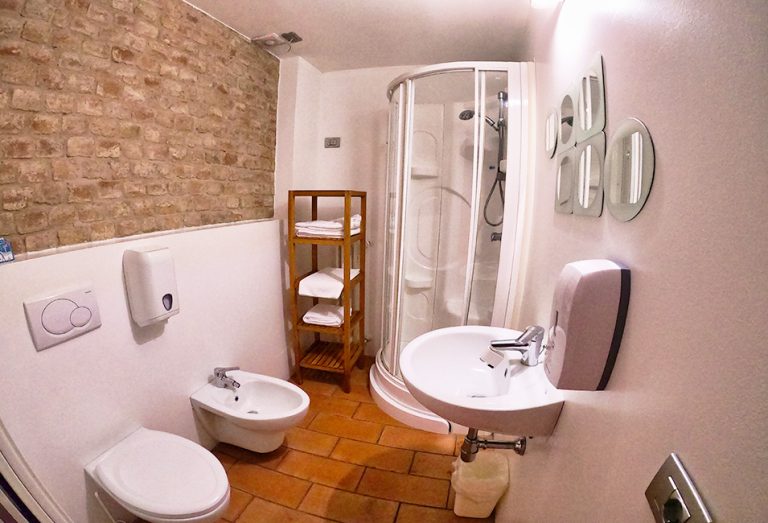Nella Bibbia non è mai menzionato e forse i primi a distinguerlo furono gli Egizi: da allora ne abbiamo scoperti e inventati un sacco di tipi diversi
The Internet is a world made of blue: it is the color of Facebook, Twitter, Reddit, LinkedIn, Microsoft, Wikipedia, many hypertext links and many homepages and windows (as well as the Post). It is not a coordinated choice, but a random one, and reflects real life. As the Washington Post wrote a few years ago, many studies have found that blue is the favorite color of most men and women, regardless of their country. It is also the hue most often associated with a sense of confidence, stability, and competence. It is also the basis of many new trendy shades, both on the internet and for clothing and furnishings; still in 2019 Pantone, a company considered an authority in the world of colors, had chosen Classic Blue as the color of 2020, defining it “reassuring” and able to “give a sense of protection”, of “solidity and trust”.
Yet it seems that the first humans did not know blue: for example, there is no trace of it in the European rock paintings of 20 thousand years ago and it rarely appears in the African ones. In the oldest texts that have come down to us, there are not even words to indicate it. It is never mentioned in the Bible (recently it was discovered that the word tehelet, which was believed to indicate blue, instead indicated the red purple, extracted from molluscs found on Israeli and Lebanese beaches). Homer in the Iliad and in the Odyssey mentions black and white a hundred times, more rarely red (about fifteen), then yellow and green (less than ten) but never blue, despite the many marine scenes in the second poem, where the sea is described as “dark as wine”.
In most ancient texts, in fact, the most cited colors are black and white – fundamental for distinguishing day from night and used to indicate the concept of splendor and darkness – and then red, the color of blood and danger ; only later were yellow and green added. It happened, for example, in the tablets of Ugarit (in present-day Syria) of the eighth century BC, in the ancient Chinese texts and in the Indian epic of the Mahabharata, as the philologist Lazarus Geiger discovered in his accurate studies in the nineteenth century. Geiger also observed that in modern European languages the word blue always comes from the words black or green.
Initially some historians hypothesized that the first men could distinguish only black, white and red; others argued – and they are the most accredited theories – that they were not interested in distinguishing colors because they were not essential for survival. Furthermore, blue is not a color so present in nature – there are not many plants, flowers, animals and blue rocks – and even if we perceive the sea and the sky as such, it is not said that it was also true for the ancients. More than one study of indigenous peoples or children who were not already told that the sky is blue consider it white or colorless.
It is therefore possible that for centuries humans had not identified it or that, according to other theories, they simply were not interested in describing it and that every culture has its own particular chromatic vision of the world, not only in describing some colors rather than others but also in considering some of their traits: for example the ancient Greeks were particularly interested in rendering the brilliance and splendor of colours
Egyptian Blue
Most likely the first humans to clearly distinguish blue – and to appreciate it – were the Ancient Egyptians, about 6 thousand years ago. It was that of the lapis lazuli from the mountains of Badakhshan, in northeastern Afghanistan, one of the oldest mines in the world: from here many of the precious and semi-precious stones of the Egyptians and Sumerians were extracted, and all the lapis lazuli in circulation at least until to the nineteenth century. The Egyptians set them in jewels, in headdresses and in funerary masks, such as that of Pharaoh Tutankhamun, but they never managed to pulverize them into a pigment, obtaining only grayish powders.
However, they invented another type of blue, Egyptian blue, which they marketed to the Persians, Etruscans, Greeks and Romans, introducing them to the idea of blue. They managed to produce it around 2,200 BC. mixing limestone and sand with a copper-containing mineral (such as azurite or malachite) and heating the solution to between 800 and 900°C. The result was an opaque blue glass: by adding egg white, rubber or glues, a resistant paint or ceramic enamel was finally obtained. However, the process was complex and could easily end up with a glassy, greenish mess, as historian Victoria Finlay explained in the book The Brilliant History of Color in Art (2014).
Egyptian blue is considered the first pigment produced synthetically by men; it was used to paint ceramics and statues, to decorate the tombs of the pharaohs and in wall paintings. It was certainly produced in Alexandria and it is said that it was here that a certain Vestorius, coming from Naples, learned to make it. Back in Pozzuoli he founded a factory from which the color vestorianum or puteolanum caeruleum spread, widely used in Vesuvian painting and in the Roman Empire in general. In fact, the Romans also contributed to the spread of blue throughout Europe, from Spain to present-day England and Asia Minor. Egyptian blue remained the most used throughout the Greco-Roman era, at least until the 4th century AD, when other types of blue were born.
Ultramarine
For centuries considered the “true blue” and the best blue ever created by man, ultramarine was first used by Buddhist fresco painters of Bamiyan, Afghanistan in the 6th century AD. It was obtained from lapis lazuli extracted from the nearby mountains, crushed by separating the most colored part from minerals such as pyrite, calcite and dolomite, with a procedure that, millennia after the attempts of the Egyptians, had finally worked.
From there it arrived in Europe, passing through Venice, in the 14th and 15th centuries, where it took the name of ultramarine blue and established itself as «the most perfect of all colours», as the fifteenth-century painting treatises defined it. It was very expensive, its price rivaling that of gold, and was therefore used only in the most valuable works of wealthy patrons. In particular, he made the mantle of the Madonnas from all over Europe shine, after the Council of Ephesus in 431 AD. the Catholic Church codified the colors of the saints establishing that Mary’s veil was blue.
In case of need, the painters fell back on azurite, a natural mineral already known by the Egyptians and which reappeared after the year 1000 for fresco murals. Perhaps by spreading a very thin veil of ultramarine, as Raphael did for example. Others used it only pure, like Titian and like the Dutch Vermeer who, it is said, ruined the family to make enough supplies. It also seems that Michelangelo had left the Deposition of Christ in the tomb unfinished because he could not afford to buy overseas to complete it.
Indigo and other blues
In the same period, Han blue and Han purple were being produced in China, inorganic pigments which, compared to Egyptian blue, used barium instead of calcium. In Mesoamerica Blue Maya was used: it was based on indigo, an organic pigment obtained from the leaves of some legumes, mixed with clay and then heated, used in mural painting, tombs, ceramics and codes.
Indigo was already used by the Egyptians, Etruscans and Romans to dye fabrics; it continued to be done even in the Middle Ages, then from the sixteenth century it was imported above all from the Americas and used particularly in England. When, in 1704, Isaac Newton published his first treatise on optics, he established that the rainbow had 7 colors – instead of the 5 that are observed in nature – to reflect the 7 days of the week, the 7 notes of the musical scale and the 7 planets then known: the two he added, arbitrarily, were orange and indigo. In 1880 the natural dye was replaced by the synthetic one, still used to dye blue jeans. It has recently been discovered that it can also be produced by the Escherichia coli bacterium: it is called biological indigo and could be an important element of the textile industry in the coming years.
After the year 1000 and with the introduction of ultramarine, new blues were not invented for centuries: the Egyptian one was abandoned and azurite, ultramarine and indigo were used. Things changed between the eighteenth and early nineteenth centuries which, thanks to chemistry, ushered in a great period of new blues.
Cobalt blue
It dates back to the 8th-9th century and was used for pottery, jewelery and, in China, for a type of blue and white porcelain. In 1802 the French chemist Louis Jacques Thénard synthesized it from aluminum oxide, making it cheaper. Commercial production began in 1807 and since then it has been used by painters such as J. M. W. Turner, Pierre-Auguste Renoir and Vincent van Gogh, as an inexpensive alternative to ultramarine.
Cerulean blue
Known since the late eighteenth century, it was perfected by the German Andreas Höpfner in 1805, by heating cobalt and tin oxides. It was used in art as a pigment from 1860 and sold by the British company Rowney and Company under the name of coeruleum, because it recalled the color of the sky. In 1999, Pantone named it the Color of the Millennium and the tint of the future.
Prussian blue
It is probably the most important blue after ultramarine. It was discovered by chance in 1706, in Berlin, by the Swiss pigment manufacturer Johann Jacob Diesbach, as told by Benjamín Labatut in the book When we stopped understanding the world just released by Adelphi. Diesbach was trying to replicate the carmine color, which was obtained by grinding thousands of female specimens of cochineal, a weed from Mexico: he added potassium salt to the blood of the animal and instead obtained a dark and shining blue like ultramarine blue. He didn’t get much from the discovery but made a fortune with his financier, the ornithologist, linguist and entomologist Johann Leonhard Frisch, who sold it to shops in Paris, London and St. Petersburg, and then used the proceeds to start the first Prussian sericulture. The first major work in which it was used is The Burial of Christ, painted in 1709 by the Dutch Pieter van der Werff, but it is most famous for the use made of it by Pablo Picasso in his blue period and the Japanese Hokusai in the Great Wave of Kanagawa and in some woodcuts of the 36 views of Mount Fuji.
Again Labatut tells of a fatal turning point in the history of Prussian blue. In 1782 the Swedish chemist Carl Wilhelm Scheele stirred a spoonful of sulfuric acid residues into a container of Prussian blue and thus invented cyanide, also known as prussic acid. Among Scheele’s many other discoveries there was also arsenic acid, the prolonged exposure to which was probably the cause of his death at the age of 43, with his liver smashed, his skin covered in blisters and semi-paralysed. Similar symptoms led to the deaths of many children throughout Europe, whose toys and sweets had been dyed with an arsenic-based dye manufactured by Scheele. It was a brilliant emerald green, Napoleon’s favorite colour, and he surrounded himself in it in sheets, carpets and tapestries, perhaps enduring himself to suffer the symptoms of poisoning over time.
A happier use of Prussian blue was instead the basis of cyanotype, one of the first methods of photographic printing. A negative is placed between the light and a sheet on which a photosensitive solution based on Prussian blue has been applied. It was also widely used by architects to reproduce plans and technical drawings in photographs called blueprints for this reason, a term used today in English also to indicate more generally a scheme to follow, a track. Finally, Prussian blue was also used to dye fabrics, especially military uniforms, of both the Prussians and the Napoleonic armies; in France it is also called bleu national.
Synthetic ultramarine
The story of ultramarine blue changed in 1824, when the Societé d’Encouragement d’Industrie, the society for the promotion of French industry, offered a prize of 6,000 francs to anyone who invented a synthetic version. Within a short time the French chemist Jean Baptiste Guimet succeeded in 1826 and the German professor Christian Gmelin in 1828; the prize was won by Guimet and the new pigment was also called French ultramarine. While Guimet kept the process secret, however, Gmelin made it public, starting the industrial production of artificial ultramarine blue.
Blue Klein
More than one hundred and fifty years later, the history of ultramarine blue took a step further. Indeed, in the 1950s the French painter Yves Klein developed an opaque version, which he registered in 1960 under the name of International Klein Blue (IKB). He used it in more than 200 works: monochrome canvases, sculptures and model bodies that imprinted color on the canvas. The Blue Klein became his trademark. He once said that «blue has no dimensions, it goes beyond dimensions», meaning that he could transport the observer off the canvas.
One of the most well-known and moving uses of the IKB is Derek Jerman’s film Blue, which shows the same nuance for 75 minutes accompanied by monologues, dialogues and a musical arrangement.
YInMn, the last blue
In 2009 a new blue was discovered by chance, which was called YInMn from the initials of its components: Y for yttrium, In for indium and Mn for manganese. It was obtained by Andrew Smith, a research student in the laboratory of professor Mas Subramanian of the University of Oregon, by heating manganese oxide to about 1,200 °C. It was patented in 2012 and has since been used for external use before being approved for general use by the US Environmental Protection Agency in the spring of 2020 under the name Blue 10G513. It is already found in many objects and the Crayola company has put on sale a YInMn blue crayon called Bluetiful, a play on words between blue and beautiful (beautiful, in English). It is a pure blue, without the addition of white or black pigments, it is very stable, resistant and free of toxic components, contrary to many pigments that preceded it.
BONUS: The genre of blue
We are used to associating blue with boys and pink with girls, but it is a convention established after the Second World War and particularly in the 1950s in the United States, from which it spread throughout the West. The reasons were mostly marketing ones, because dividing genres into colors made it easier to sell more clothes and more toys. Before that, kids had been dressed according to age not gender, and toddlers were often in white because it was easier to bleach and clean up. In the novel Little Women by Louise May Alcott we find one of the first references of the distinction of colors based on gender: a girl is identified by a pink ribbon and a boy by a blue ribbon, but it was a French fashion, an exotic habit. Indeed until the twentieth century, if there really was a subdivision it was opposite to the one we use today: red, considered a bright and combative color that recalled that of blood, was considered masculine while blue, with the history of modesty and serenity that carried with Mary’s cloaks, it was deemed more appropriate for women.
Original post: Arianna Cavallo from Il post
Blue Garibaldi Room&Breakfast. Copyright 2023. All rights reserved.
P.Iva: IT03578300265 - CIR 034036-AF-00002










